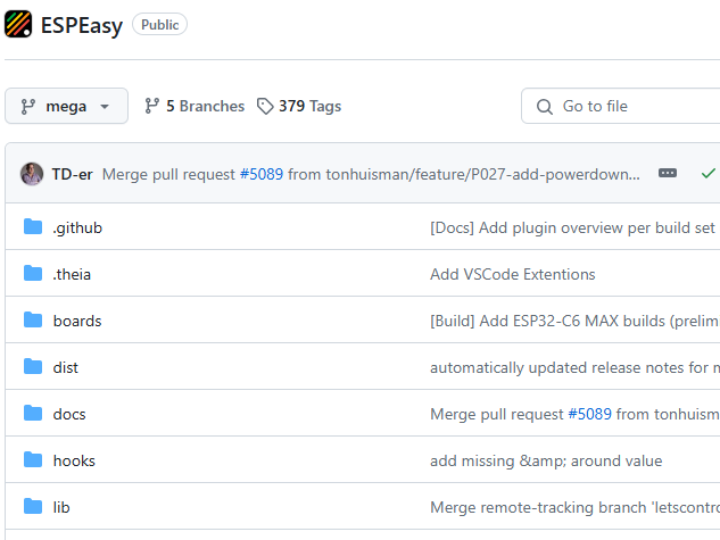ESPEasy
Easy MultiSensor device based on ESP8266/ESP32

Easy MultiSensor device based on ESP8266/ESP32

Similar projects you might like
PoECAM is an open source Fully programmable camera integrating PoE (Power Over Ethernet) . This item is ESP32 based webcam with W5500 embedd
M5Stack PoE Camera W/O Wi-Fi (OV2640)
teju2
2301
0
NuttX is a real-time operating system (RTOS) with an emphasis on standards compliance and small footprint.
Apache NuttX Real-Time Operating System
ssekim7
1616
2
News distribution system clients via IP network
WIDE STREAM
ssekim1
1385
0
This article describes an Ethernet-connected subsystem of a larger modular sensor system.
How to Design a Super Simple Sensor System for Industrial Monitoring Applications
ssekim5
1562
1
LwIP + W5500 Blog article
W5500 drivers for LWiP using ioLibrary
chen5
1824
2
CAMELOT GPS TIMESTAMPING TEST BOARD
CAMELOT GPS TIMESTAMPING TEST BOARD
teddy4
1335
0
This content is an introduction video for the W5500 network module.
W5500-Q184 | W5500 Ethernet TCP/IP Protocol Stack SPI IOT Compatible WIZ820io Shield
scott4
1578
1
AVR ATmega port of freeRTOS
avrfreertos
ssekim5
1522
1